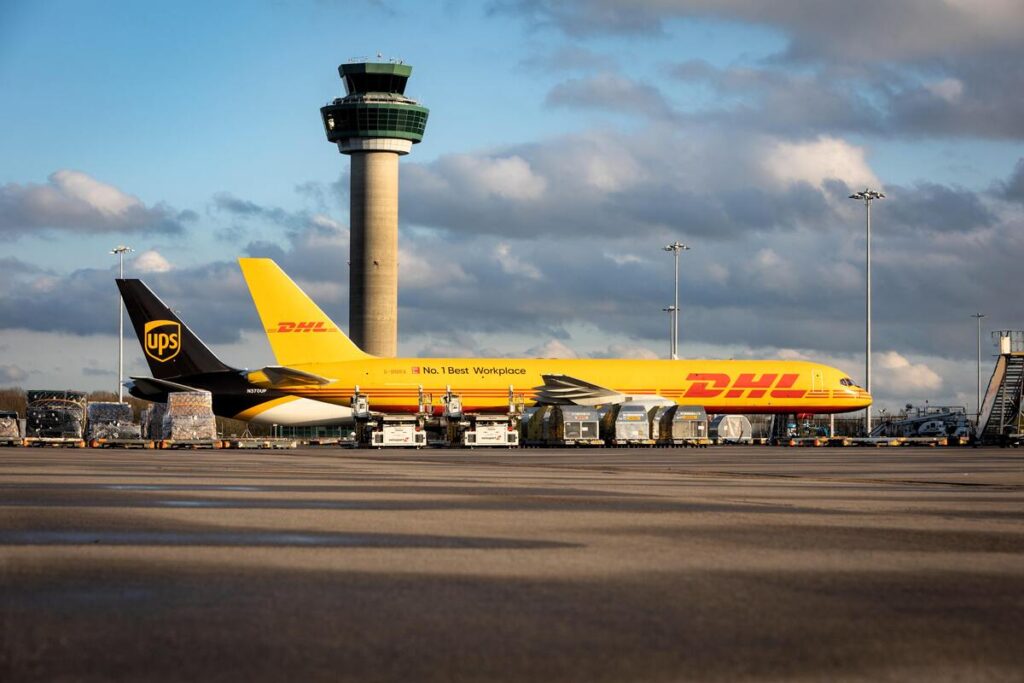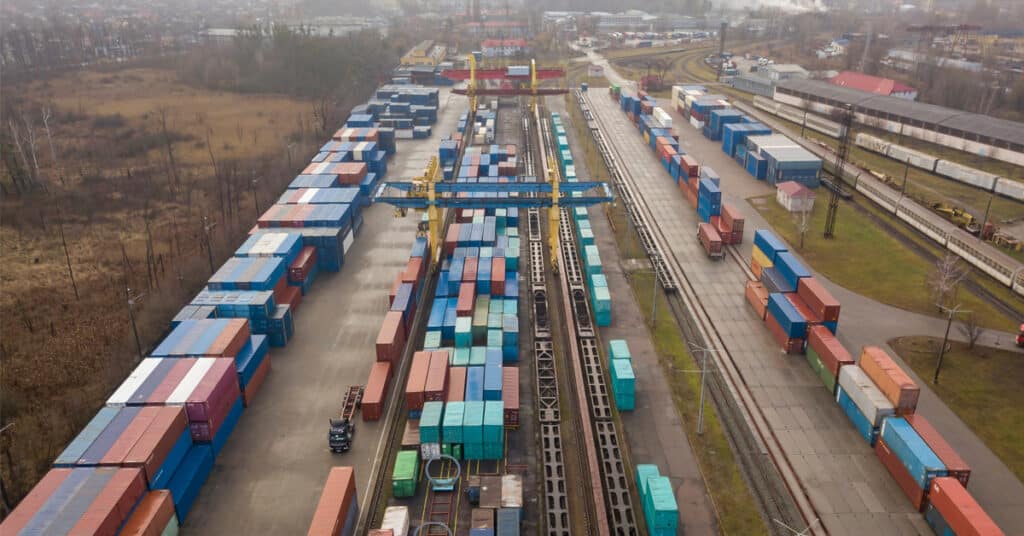- By Della tj
- September 26, 2025
- Air Freight, Shipping
Finding the most accurate cost of air freight from China to UK calculator tools can save businesses time, money, and costly miscalculations. Many importers struggle to estimate charges correctly because air freight rates depend on cargo weight, volume, and surcharges. With the right calculator and knowledge, however, you can simplify logistics planning and avoid hidden fees.
What Is an Air Freight From China to UK Calculator?
An air freight from China to UK calculator is a digital tool that helps importers estimate shipping charges based on cargo weight, volume, and route. These calculators typically consider volumetric weight, actual weight, fuel surcharges, security fees, and customs duties. Accordingly, they provide businesses with upfront insights for budgeting and supply chain decisions.
How Does an Air Freight Calculator Work?
Most calculators use a standard volumetric formula:
Volumetric Weight (kg) = (Length × Width × Height in cm) ÷ 6000
Afterward, the tool compares volumetric and actual weight, then applies the higher figure to calculate costs. For example, if your cargo is lightweight but bulky, you’ll pay based on volumetric weight. Additionally, some calculators integrate real-time airline rates and fuel charges for accuracy.
Why Should You Use an Air Freight Calculator for UK Imports?
Importers benefit from calculators because they:
- Provide instant cost estimates.
- Avoid surprises from volumetric pricing.
- Help compare different airlines.
- Allow better planning of customs clearance fees.
Moreover, businesses shipping regularly from China to the UK can use calculators to track price trends, thereby improving budget control.
What Are the Key Factors Affecting Air Freight Costs?
Several elements influence costs when using a China to UK air freight calculator:
- Weight and Volume: Larger shipments cost more.
- Origin and Destination Airports: Shanghai–Heathrow may differ from Shenzhen–Manchester.
- Service Type: Express, standard, or consolidated air freight.
- Fuel Surcharges: Adjusted monthly.
- Customs Duties: VAT and tariffs in the UK.
- Peak Season Demand: Rates rise before holidays.
In addition, security fees and handling charges at airports also add to total expenses.
Case Studies: Real Shipping Examples
Case 1:
- Route: Shenzhen → London Heathrow
- Cargo: 350 kg electronics
- Mode: Standard air freight
- Cost: USD 2,150
- Transit Time: 4 days
Case 2:
- Route: Shanghai → Manchester
- Cargo: 120 kg apparel
- Mode: Express air freight
- Cost: USD 1,080
- Transit Time: 3 days
Comparison of Air Freight With Other Modes
| Mode | Avg. Cost (per kg) | Transit Time | Pros | Cons |
|---|---|---|---|---|
| Air Freight | USD 5–10 | 3–7 days | Fast, reliable, secure | Higher cost |
| Sea Freight | USD 0.5–2 | 30–40 days | Cheapest for bulk cargo | Very slow |
| Rail Freight | USD 2–4 | 18–25 days | Balance of speed and cost, eco-friendly | Limited routes to UK |
| Courier (DHL/UPS/FedEx) | USD 10–15 | 2–5 days | Door-to-door convenience | Expensive for large shipments |
Accordingly, calculators reveal the trade-offs between speed and cost.
What Documents Are Required for Air Freight From China to UK?
| Document Type | Purpose |
|---|---|
| Commercial Invoice | Proof of sale and cargo value |
| Packing List | Detailed contents of shipment |
| Air Waybill (AWB) | Contract between shipper and airline |
| Customs Declaration | Required for UK border entry |
| Import Licenses | Specific goods like chemicals or food |
Without these documents, delays and penalties may occur.
How to Estimate Customs Duties and VAT in the UK?
Air freight calculators often exclude customs duties. Importers should add:
- UK VAT (20%) on goods and freight costs.
- Customs Duty depending on product HS codes.
- Handling Fees charged by airlines and brokers.
For example, a USD 5,000 electronics shipment might incur around USD 1,000 in VAT and duty combined.
What Are the Pros and Cons of Air Freight?
| Pros | Cons |
|---|---|
| Fastest shipping method | High costs compared to sea freight |
| Reliable schedules | Weight and size limitations |
| High security standards | Environmental impact (carbon emissions) |
| Ideal for urgent and valuable goods | Seasonal rate surges |
Therefore, businesses must balance urgency against expense.
How to Choose the Best Air Freight Forwarder?
Choosing the right partner is as important as using a calculator. Look for:
- Strong presence in China and UK airports.
- Transparent quotations including surcharges.
- 24/7 customer support.
- Value-added services like warehousing and customs clearance.
Additionally, companies like TopChinaFreight.com specialize in customized solutions for importers.
Transit Time by Major Chinese Airports
| Origin Airport | Destination UK | Avg. Transit Time |
|---|---|---|
| Shanghai Pudong (PVG) | London Heathrow | 3–5 days |
| Guangzhou (CAN) | Birmingham | 4–6 days |
| Shenzhen (SZX) | London Gatwick | 3–5 days |
| Beijing (PEK) | Manchester | 4–7 days |
Transit time may vary due to customs and airline schedules.
Should You Use an Online Calculator or Request Quotes Directly?
Online calculators are useful for quick estimates. However, direct quotes from freight forwarders often include negotiated airline rates, special handling, or volume discounts. Consequently, businesses often combine both methods: calculators for budgeting and forwarders for final booking.
Conclusion
Using an air freight from China to UK calculator simplifies logistics planning by providing accurate cost forecasts, customs insights, and transit time estimates. Moreover, businesses can avoid hidden charges and better manage budgets by combining calculators with expert freight forwarders. Ultimately, fast and reliable air freight remains a vital choice for importers balancing speed with cost efficiency.
- Consult TJ China Freight Forwarding for the lowest quote. They will provide you with reliable, cost-effective service.
FAQs
Q1.How do I calculate volumetric weight for shipping from China to UK?
Divide cargo dimensions in cm (L×W×H) by 6000; compare with actual weight and use the higher figure.
Q2.Are fuel surcharges included in air freight cost calculators?
Yes, most calculators include variable fuel surcharges, but confirm with your freight forwarder for the latest updated rates.
Q3.Can I calculate customs duty using an air freight calculator?
No, calculators typically exclude customs duty; you must check UK HS codes and VAT rates for accurate duty estimation.
Q4.What is the cheapest air freight option from China to UK?
Consolidated air freight is usually the cheapest method, though slower than express services while still faster than sea freight.
Q5.How accurate are online freight calculators for UK imports?
They provide close estimates but final rates may vary with airline schedules, peak season demand, and customs inspection delays.





